 |
Our aircraft are
based at RNZAF Ohakea which is the home to the Airtrainers of the Pilot
Training Squadron and Central Flying School, the Beech KingAirs of 42
Squadron and the Iroquois and Sioux helicopters of 3 Squadron (as well as
the first of the newly arrived Augusta 109 helicopters) and the RNZAF
Historic Flight. The Base is also home to a number of trade and technical
facilities.
Ohakea has two sealed runways - 2,500 metre 09/27 and 2,100 metre 15/33.
As well the parallel taxiway Bravo is used as a runway by the Airtrainers.
There is also a 575m grass vector 09/27 and the large "New Field"
grass area south of the 09/27 vector which is used for helicopter training
and provides a large area for aircraft such as the Harvard (this area is
just under Harvard 37's tail in the photo). This area is fittingly
reminiscent of the large grass airfields used by Spitfires during the Second
World War.
|
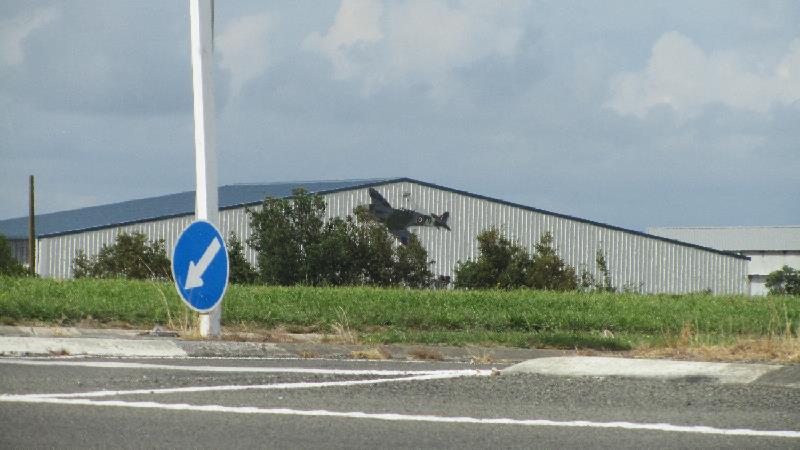 |
The Biggin Hill Historic Aircraft Centre is located within the confines
of Royal New Zealand Air Force Base Ohakea between Sanson and Bulls on State Highway 1 about two
hours north of Wellington by car. The hangar is visible from the highway
as it is currently the closest building on base to the highway. Although
casual visits are not possible, organized groups can now visit subject to
prior arrangement via the details at the top of this page.
RNZAF Base Ohakea was established as a new RNZAF Base in 1937 and
construction of the large hangars began in 1938, with 300 men employed in
the construction of the two large concrete hangars. The location of Ohakea
was chosen to take advantage of the prevailing winds (Ohakea in Maori
means "place of the wind").
The two distinctive arched concrete hangars at Ohakea (used by 42
Squadron and 3 Squadron nowadays) are each 24.6 metres high, 51 metres
long and each section of their sliding doors weighs 30 tons. At the time
the hangars cost £76,750 each to build and they were completed in 1939. It
is believed that the layout of the original buildings at Ohakea was
designed to look like an aircraft in flight with the control tower being
the "nose" and the four main hangars being the "wings"
|
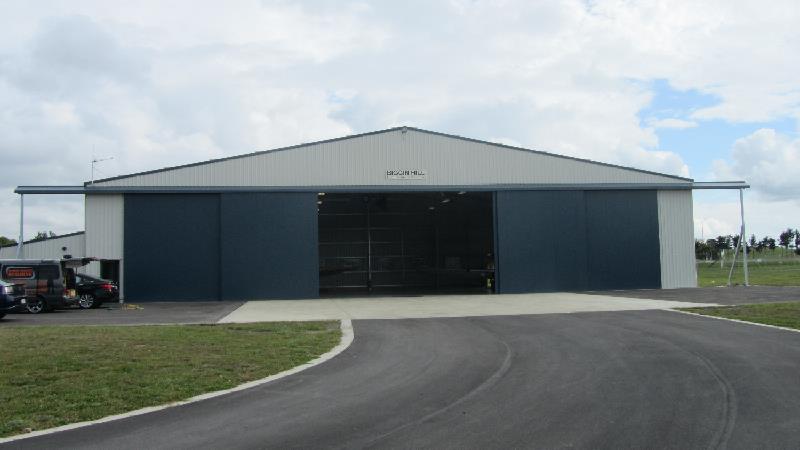 |
The hangar has
a dedicated tow way for the aircraft to access the new North East Quadrant
apron by the new helicopter hangars. The 680m2 building has an apron area
of 555m2. The main hangar doors are 5 metres high and provide a clear
opening span of 26 metres.
The hangar itself is 30 metres wide and 20
metres deep and has attached rooms of 80m2. The building has been
constructed to allow future expansion in depth. Construction is steel
framing/Coloursteel covering throughout. The hangar apron has three reinforced
tie down points to allow engine runs to be conducted in place as well as
doubling as earthing points f or
re fuelling. or
re fuelling.
|
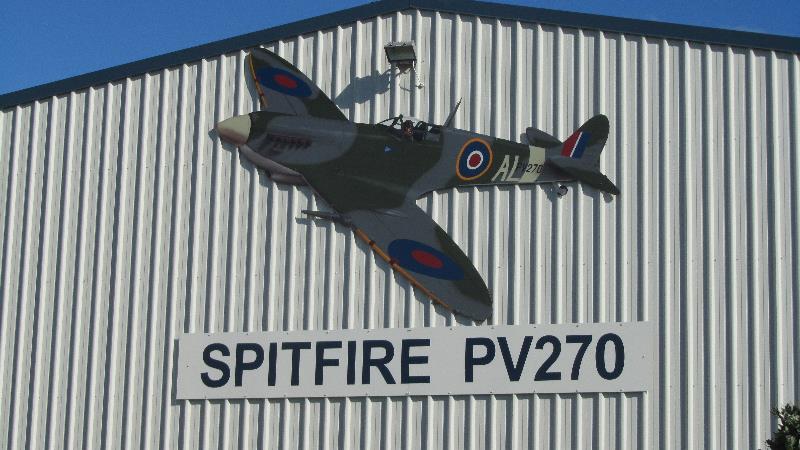 |
The hangar now has its own distinctive signage
visible from the main highway. Airbrushed by Feilding artist Tony Walton
from an original air to air photo by Gavin Conroy
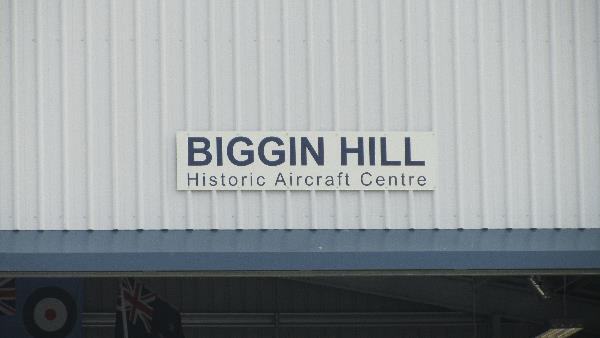
|
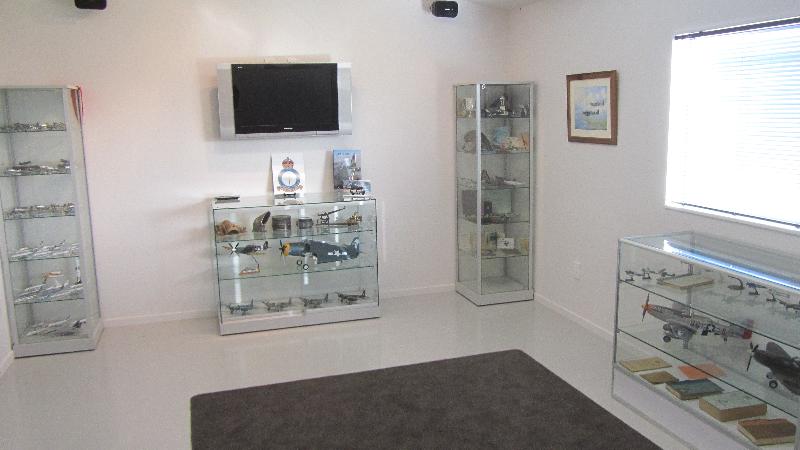 |
The hangar has a room set aside for display
items - although still a work in progress, there are models and items of
memorabilia on display as well as paintings featuring Spitfires, 485
Squadron and others. The display items will be added to in the next few
months.
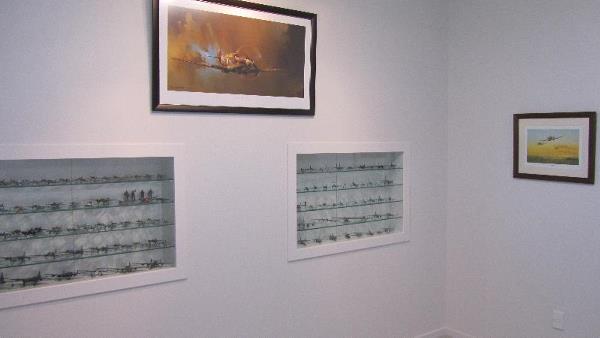
|
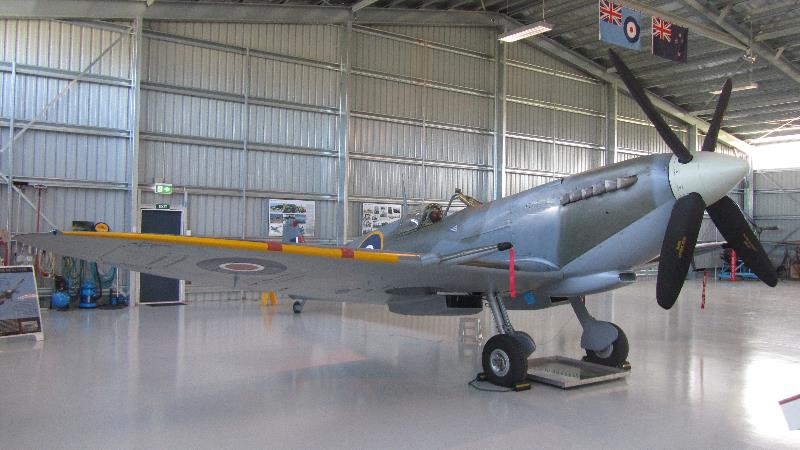 |
Spitfire PV270 in its position in the hangar.
Our Spitfire celebrated two years flying at Ohakea on March 18th 2011.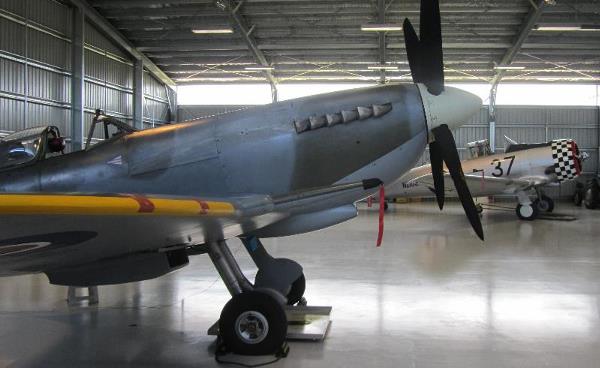
|
 |
Attention was paid to the lighting in the
hangar to provide daylight visibility at night as well as spotlights to
highlight areas such as the Spitfire cockpit.
|
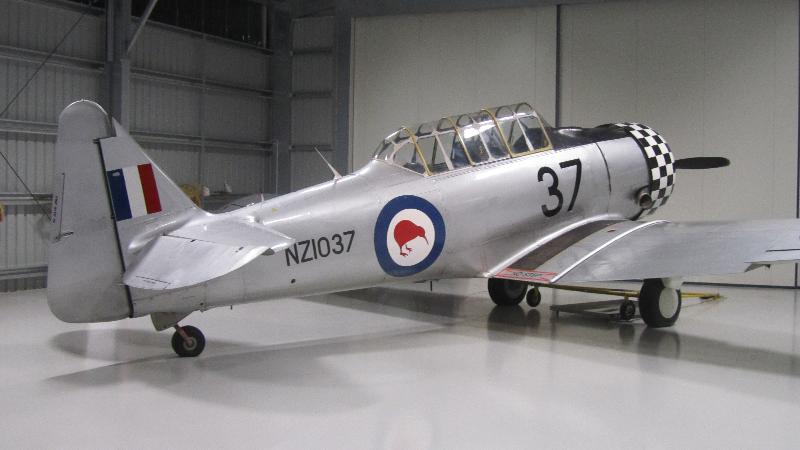 |
Harvard NZ1037 in its position in the hangar.
Harvard 37 is back at Ohakea after an absence of 34 years. It has an
uninterrupted flying history since 1942.
|
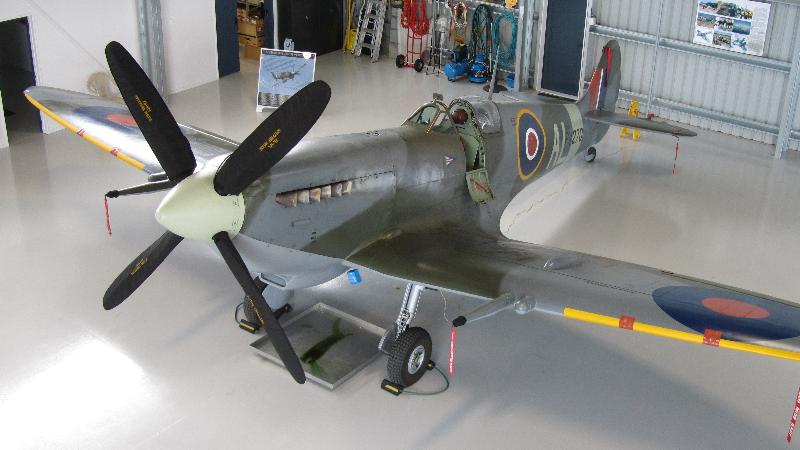 |
Elevated views of Spitfire PV270 and Harvard
NZ1037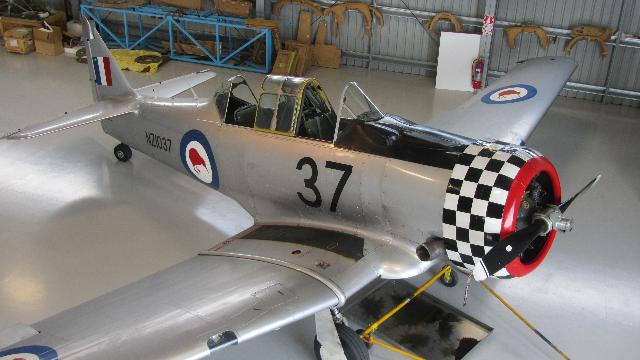
|
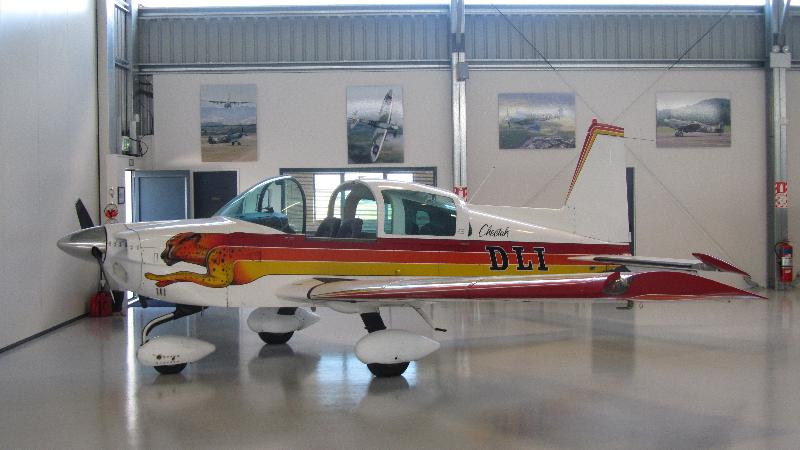 |
Our Grumman Cheetah was the original
demonstrator used by Pacific Aerospace to display the then new aircraft
type around New Zealand, hence its distinctive paintwork. Originally
powered by a 150hp Lycoming, its has been uprated to 160hp.
|
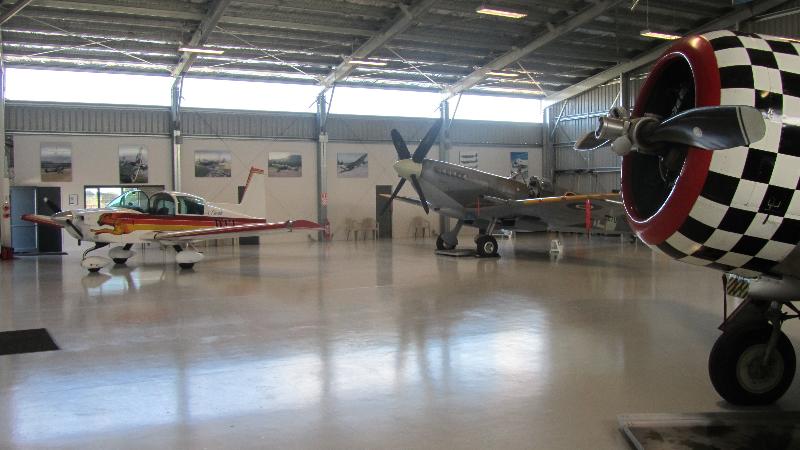 |
All three aircraft in place in the hangar. The
polycarbonate clear panels on each side of the hangar are designed to
provide natural lighting in the hangar as well as screening out UV at the
same time to protect the aircraft.
|
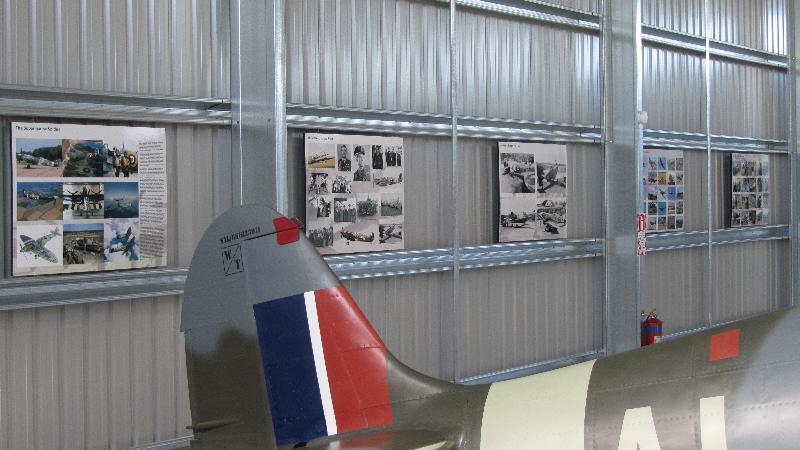 |
The rear wall of the hangar has a number of
information panels and large photographs are on the side wall of the
hangar. The information panels will extend around the side wall of the
hangar in the future. These now include some display materials lent by the
Trustees of the New Zealand Fighter Pilots Museum at Wanaka which was
closed some months ago. |



 or
re fuelling.
or
re fuelling.











